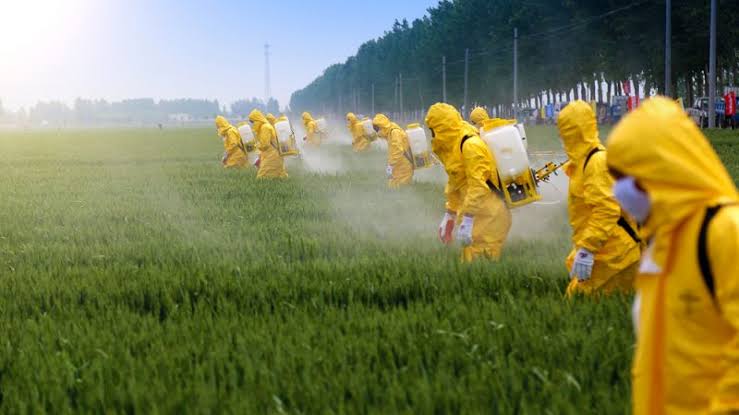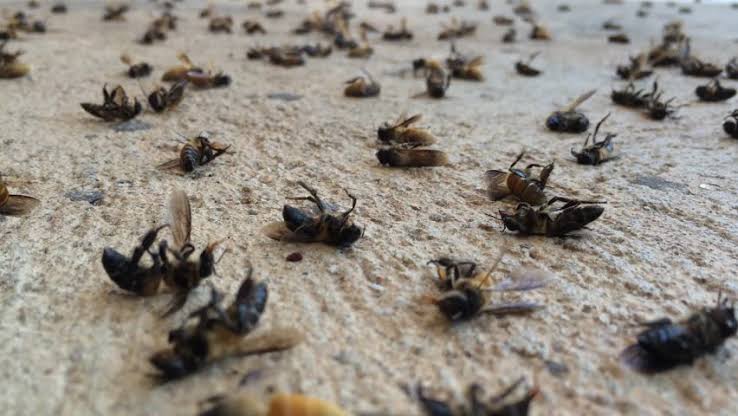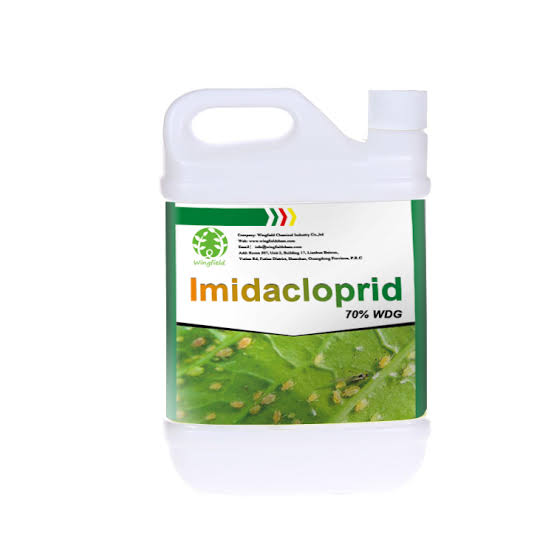RIO DE JANEIRO, BRAZIL – A deadly pesticide for bees was the most frequently found in a government survey that analyses pesticide residues in fruit and vegetables sold throughout the country.
The result of the new edition of the Program for Analysis of Pesticide Residues in Food, PARA, was released by the National Health Surveillance Agency (ANVISA) last week and also showed that in 51 percent of the tests performed some amount of pesticide residue was found in food.

In the research, which tested 4,616 samples of 14 foods, the active ingredient Imidacloprid was the most commonly found. It is a neonicotinoid, a nicotine-derived insecticide that has the ability to spread to all parts of the plant and is therefore fatal to pollinators.
A report by the Agency disclosed in March this year that more than 500 million bees died in three months in four Brazilian states. One of the main causes of these deaths was contact with neonicotinoid-based pesticides, which affect the bees’ central nervous system – affecting their capacity for learning and memory, causing many of them to lose the ability to find their way back to the hive.
A fatal pesticide for bees as the most commonly found in food is also a warning for human health. First of all because it ends up being consumed by people.
“This type of product that spreads throughout the plant is very dangerous, because washing the food or peeling it is not enough to remove the residues of pesticides that are circulating within the plant,” explains agronomist Leonardo Melgarejo, vice president of the south regional Agroecology Brazilian Association (ABA).

Another issue regarding this type of pesticide is that it is the most widely detected in PARA, which, by killing bees, also hampers the production of crops. This is because they are the main pollinators of most ecosystems, promoting the reproduction of several species.
In Brazil, of the 141 species of plants cultivated for human and animal food, about 60 percent depend to some degree on the pollination of bees. According to the Food and Agriculture Organization of the United Nations (FAO), 75 percent of crops for human food in the world rely on bees.
At PARA, Imidacloprid was found in 713 samples, or approximately 15 percent of all foods tested. Eight pesticide products based on Imidacloprid were authorized by Jair Bolsonaro’s government this year, with marketing records for foreign multinationals Sulphur Mills, Albaugh Agro (two records), Helm, Nufarm, Tide and Tradecorp, as well as for the national AllierBrasil.
In the PARA’s previous edition, based on analysis carried out between 2013 and 2015, Imidacloprid had been only the fifth most common active ingredient found in the samples. According to the ANVISA, it is not possible to compare the results because the research methodology has changed – food and analysis periods are now different.
Results are not positive
At the request of the Agency, specialists from organizations studying the subject of pesticides analyzed the report published on the ANVISA’s website, and stated that the results are alarming, contrary to the optimistic opinion of the report’s official disclosure.

According to Melgarejo, of the Brazilian Association of Agroecology (ABA), the report triggers a warning. “The number of 23 percent of products presenting pesticides above the allowed level is frightening. And the 27 percent with poison below the limit does not provide reassurance,” he says.
“In the definition of acceptable limits, an adult person weighing 50 kilos is taken as the baseline. But we are feeding children and babies with these same foods. Being below the limit considered safe for a 50-kilo adult does not mean it is safe for an infant or child”.
Representatives of the Permanent Campaign Against Agrochemicals and for Life also criticized the ANVISA’s position on the report, qualified as “a beautiful cover-up for a highly toxic content”. In a note, the organization says that despite the technical nature of the publication, the release disclosed on the ANVISA’s website is “extremely optimistic”. According to them, the tone is “of a political propaganda piece for a report which, read attentively, raises great concerns for society”.
The organization adds that “in the context of increasing use of pesticides year after year, and also of the systematic increase of poisoning by pesticides, it is regrettable to see the Agency that should ensure the population’s food security minimizing very serious results on the conditions of food served to the Brazilian people”.
This report is part of the ‘Por Trás do Alimento’ (“Behind the Food”) project, to investigate the use of pesticides in Brazil. The complete report is on the project’s website.

